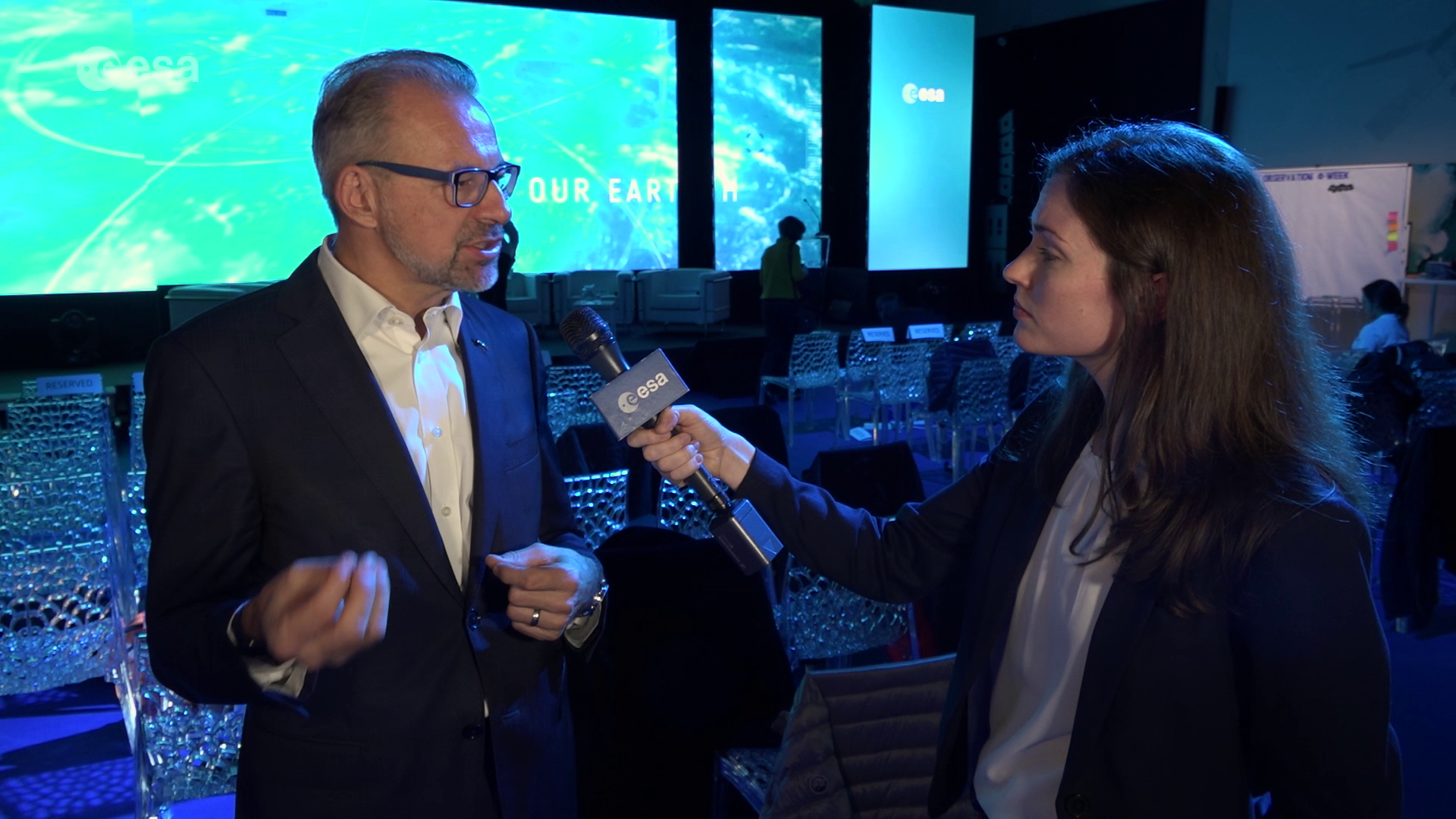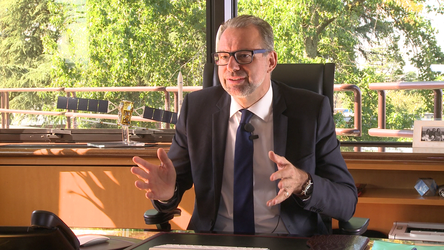ɸ-week kicks off
With satellites delivering a mindboggling amount of data about our planet along with the availability of the latest digital technologies, there are countless opportunities for innovation. ESA’s ɸ-week, which kicked off today, explores how this new world can be embraced to bring even more benefits to all.
In his opening address, ESA Director General, Jan Wörner, said, “If you look up the meaning of ɸ there is a long explanation, but at the end it says ‘ɸ is also used as a symbol for the golden ratio and on other occasions for maths and science’ and I would now add, ‘and in space’ – space for the future.”
The week-long event has drawn hundreds of people from numerous disciplines to explore innovation, new technologies and cross disciplinary cooperation – to see how satellite data and new technologies such as artificial intelligence and blockchain can benefit business, industry and science, and also ESA.
ESA’s Director of Earth Observation Programme, Josef Aschbacher, explains, “Today we have numerous satellites and other sensors such as drones delivering a wealth of data to understand how our planet works and the impact human activity is having on natural processes. Importantly, data are also used for a myriad of practical applications from farming to maritime safety and, ultimately, to improve daily lives.
“We are certainly data rich, and we continue to develop cutting-edge space technologies to measure different facets of our world, but to get even more from these fantastic resources, we need to couple them with aspects of the digital revolution such as artificial intelligence.
“Today, we opened ɸ-week at ESA’s Earth observation centre in Frascati, Italy. With over 700 participants from space investors and entrepreneurs to scientists, the aim is to explore new opportunities, seed ideas and exploit this golden age to the max.”
The concept of ɸ is not only applied to the area of Earth observation, but also to other areas such as launchers, the International Space Station and astronauts.
During the opening session, Lucia Linares, Head of ESA’s Space Transportation Strategy and Policy, highlighted the fact that satellites of course have to be launched, giving access to space.
She added, “In the very near future we will have Ariane 6 and Vega-C giving us further access to space, but we are also investigating in-orbit transport services and rockets with the capability of returning to Earth.”
ESA astronaut Samantha Cristoforetti talked about her experiences on the International Space Station but also about how it is time to go further, by for example, how ESA and NASA are building an infrastructure around the moon.
With a week packed with parallel sessions, ɸ-week promises to throw up new ideas and opportunities, highlighting what an exciting time we live in.






